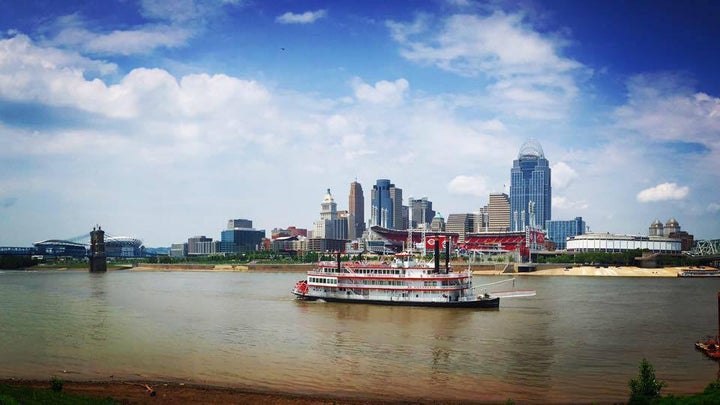
As Asian-Pacific American Heritage Month draws to a close, I question how many of us realized it even happened. A quick search of the term “Asian” on my hometown newspaper’s website returned negligible results for May: namely that Asian Food Fest happened and that Judge Thapar was appointed to the Sixth Circuit Court of Appeals. Nowhere was there an acknowledgement that May was Asian-Pacific American Heritage Month, not even in the Asian Food Fest reporting. Once again, as communities from across our region descended on our downtown to eat our food, the Asian diaspora remained painfully invisible. Imagine the outcry if our hometown paper ignored Black History Month or Women’s History Month in such a manner.
Asian-Pacific American Heritage Month is meant to be a celebration of the many different people and cultures from Asia and the Pacific Islands and their contributions to American life and society. Yet, from Chinese exclusion and the Immigration Act of 1917 to the sin of Japanese Internment to the saga of Bhagat Singh Thind’s attempts to gain citizenship, Asian-Americans have faced and continue to face discrimination and difficulties in our society. Asian refugee populations continue to experience elevated levels of poverty and many Asian women continue to endure some of the highest rates of domestic abuse in our society. Asian families struggle to access medical and social services many times because of language barriers. The City of Cincinnati, my hometown, does not consider Asian-Americans a minority group for the purposes of minority business certification for construction contracts or professional services contracts. I guess being 2% of the population is good enough.
Growing up in Ohio, it wasn’t easy being an Indian kid in the 80s and 90s. In a society where race has seemingly only been addressed in the binary of being black or white, being the brown kid with a weird name meant that to a certain level, you didn’t truly fit in with either group – you were almost invisible even though you were obviously different. People marveled at your ability to speak English - without an accent - and were incredulous when told you were born in Cincinnati. People asked you were you were from, even though you were born in Cincinnati. “No, but where are you really from?” they would ask.
However, progress occurred. Since 1980, the Asian-American population of my hometown has nearly tripled – the fastest growing immigrant group in the country. This diversity is an asset to our city, our state, and our country. Asian-Americans now serve as high ranking executives and board members in some of the most important and storied companies and civic organizations in our country. We appear as university presidents and professors, in courtrooms as lawyers, in startups as founders, and yes, in our IT departments and in our hospitals too. The United States Senate now has three Asian-American members and there are a multitude of other state and local officials who represent all of their constituents, not just the Asian ones. This progress is important.
Yet many times when we discuss opportunity for minorities, we continue to frame that argument in our familiar racial binary. Just as it is ignorant and patently false to claim that since we have had a black president we no longer have racism against African-Americans, it remains woefully uninformed to claim that since some Asian-Americans have been successful that we as a group therefore do not need assistance to get ahead. That thought process belies the diversity of what it means to be Asian-American and is dangerous in its paradoxical overbreadth and simplicity. The difficulties of an Indian-American immigrant holding a doctorate and an H-1B visa in Columbus are light-years away from the struggles of a Bhutanese-American refugee trying to survive in Akron. And still, the questions that imply your “un-Americanness”, like about where you are really from and your English proficiency, endure – whether you were born here or not. Being an American is about our shared past and our shared future; our shared values and our shared ideals. It is not solely about where you were born. And you do not need to be born here to be lawfully and rightfully American.
At a time in our country’s history where Asians are the targets of racially- and religious-based verbal and physical attacks, it is incumbent upon all of us to engage in understanding. Globally, 62% of Muslims live in the Asia-Pacific region - there are more Muslims in India and Pakistan than in the entire Middle East-North Africa region. Whether Sikhs worshiping in Wisconsin are the targets of violence or teenagers on a train in Oregon receive verbal abuse (and the Good Samaritans who rose to protect them paid a price in blood), Asians are scared because there continues to be a perception that we are not Americans. Nobody deserves violence - physical or otherwise. And nobody definitely deserves violence because they look or sound different. A temple, a train, or a bar in Kansas should be a safe place for all.
As a country of immigrants, we need to invest the time and energy to understand the array of experiences that all minority groups have endured in order to truly celebrate them. This is why education and engagement are critical during months of reflection like Asian-Pacific American Heritage Month. We must break free from the racial binary that preoccupies our conversations about diversity and inclusion and recognize the scope of experiences and histories (both bad and good) that we have in our community. We must recognize that the “American” in Asian-American is just as important as the “Asian” in that term. Otherwise we make a decision to value certain people of color more than others and relegate certain groups to a future not unlike the past – being obviously different, yet still invisible.
